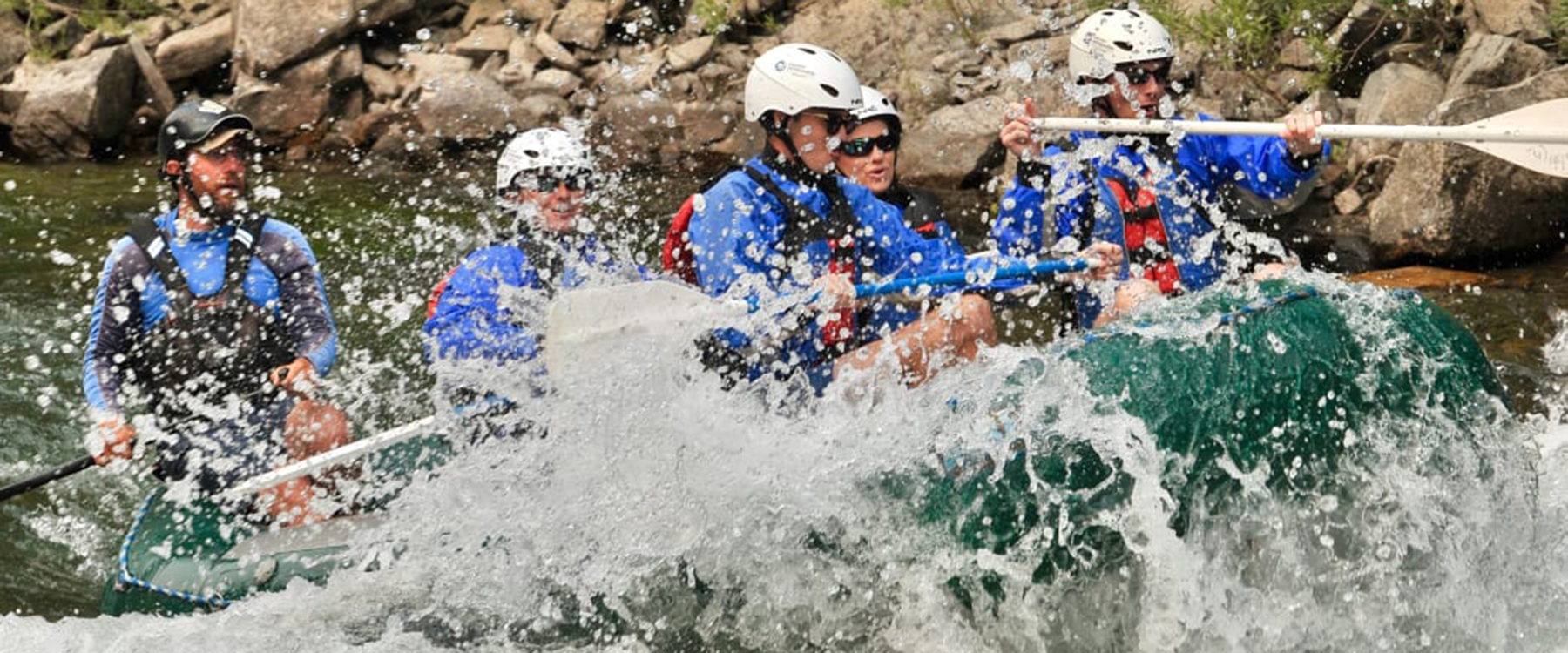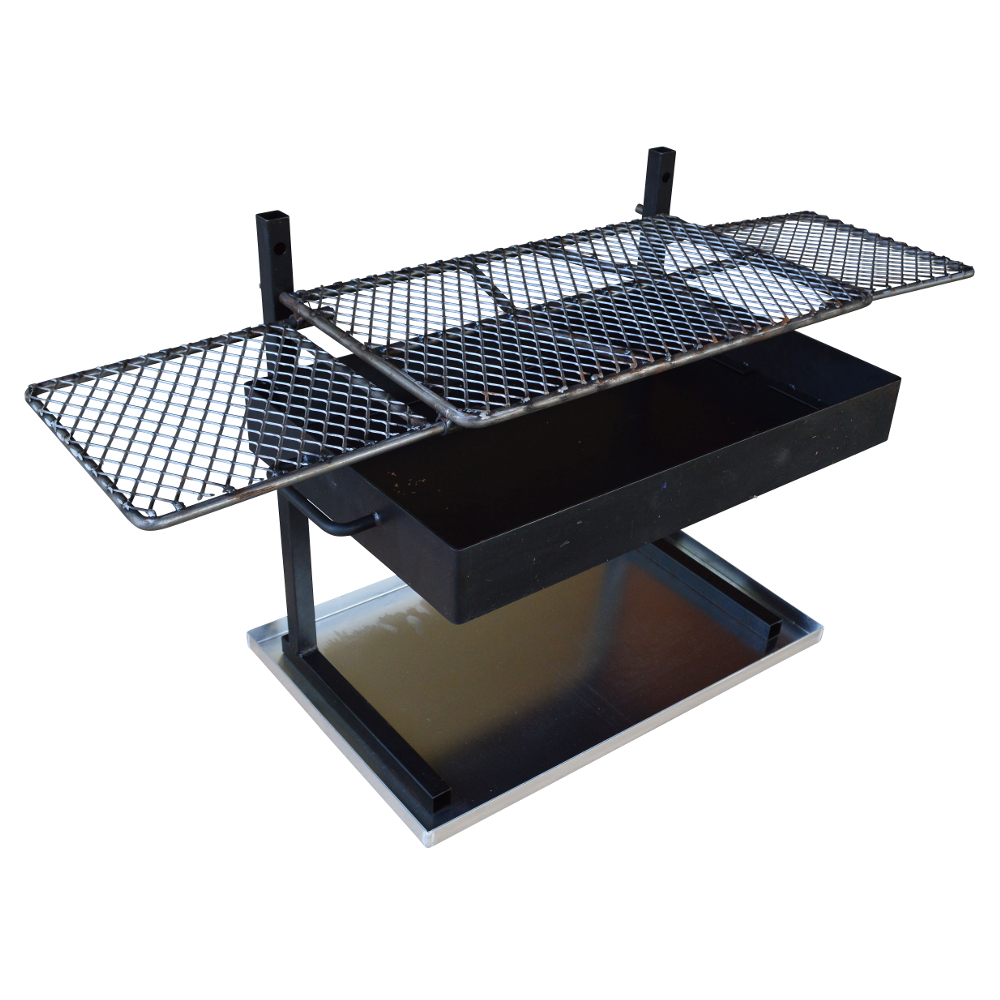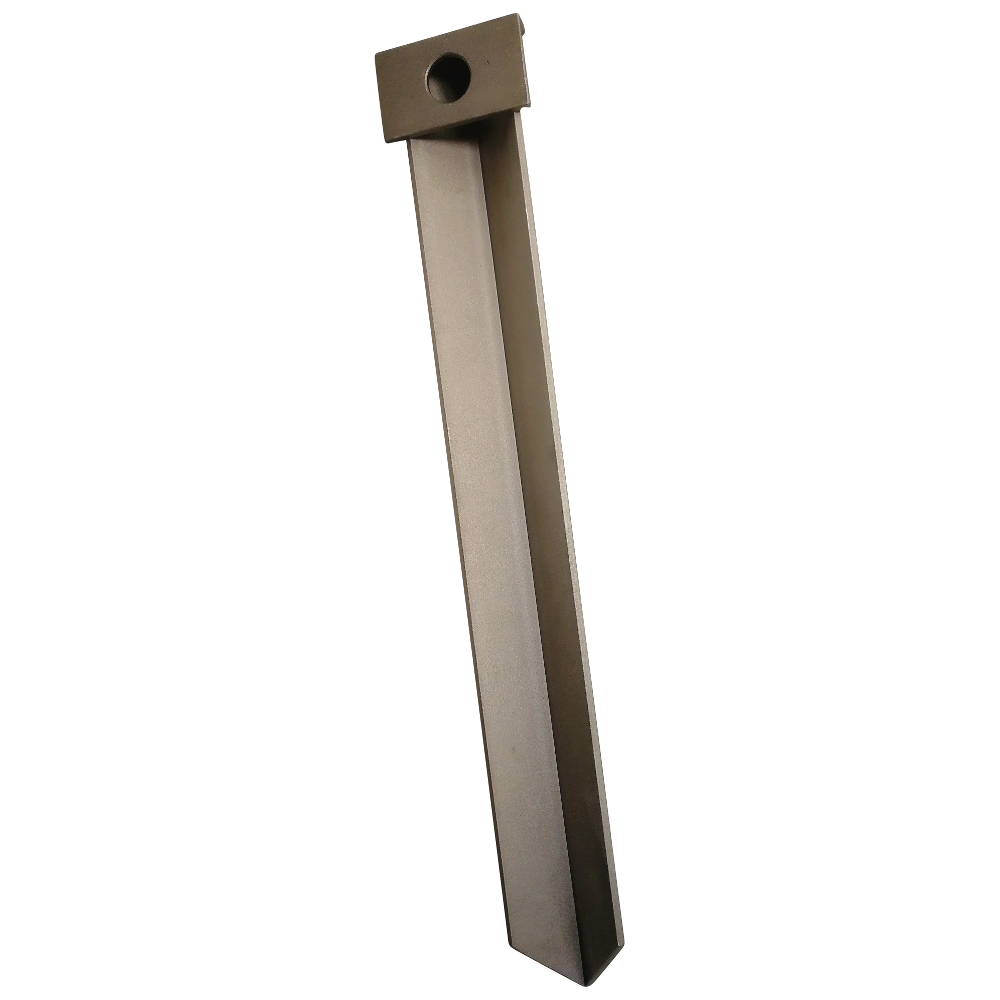My adrenaline was pumping as I plunged my paddle into the swift current of the Eagle River. It was early June, and the water was big. After a Colorado winter with heavy snowfall, the spring melt had caused the river to rage. As the churning water threatened to flip our raft, a member of our crew was frozen with his paddle hovering over the water.
I heard someone scream at him, “You have to paddle!” and I dug in harder, helping to keep the boat upright. We were racing through the Dowd Chute, a quarter-mile stretch of the Eagle River that offers some of the most thrilling and intense rafting in Colorado.
The Eagle River rises at the Continental Divide and flows past the towns of Minturn and Avon. It runs between the Vail and Beaver Creek ski resorts, before joining the Colorado River near Dotsero. The water levels on the Eagle River aren’t dam controlled, so a big winter and heavy spring runoff can create epic paddling conditions. Typically, the rapids in the Dowd Chute are rated Class IV, while sections of Class III rapids lie farther downstream. The wild rapids and beautiful scenery create an unforgettable rafting experience. But it’s also a challenge.
Before you sign up for an Eagle Rover rafting trip, there are a couple of things to consider. Rafting Class IV water doesn't require a ton of experience, but it does require physical and mental fortitude.
“This is not an amusement park ride,” says Greg Kelchner, who started Timberline Tours in Vail in 1971. “You need to be realistic about your sense of adventure and your confidence in your physical abilities. Don't let anybody talk you into this.”
You will get wet, and you will probably get cold. There will be times that you think you're going to fall out of the boat, and there might be times when you do fall out. In such a challenging environment, you also need the right gear so that you will be safe and as comfortable as possible. If you have the essentials, a sense of adventure, the stamina, and the proper gear, shooting the Chute will be a blast.
A Physical Challenge
To raft the Eagle River, you don’t have to be an expert paddler. You can run the river with one of several guide services. But, you need to be fit and prepared to swim in cold water. Because the water levels on the river can fluctuate greatly, the Dowd Chute has a short season, usually May through early July. For a good portion of the paddling season, the water is cold or even frigid. Even if you don’t go into the drink, you can encounter air temperatures in the 50s, so the trip requires a good deal of energy.
“You need to understand that you need to be a physically active person,” says Kelchner. “But, you don't have to be a world-class athlete. You need to have an active lifestyle.”
Running a stretch of Class IV water means regular, if not continuous, paddling. In the process, you’ll tax muscles that you don’t typically strain in everyday life. So, it’s crucial to have a general level of fitness. You need to be comfortable with an hour to an hour and a half of vigorous activity. Even though that may sound like a short trip, you’ll still feel worked after shooting the Chute.
Though nobody wants to flip a raft, there’s always the chance that it might happen. So, you also need to be comfortable in the water.
“If you do happen to end up going in the water, you need to remain calm,” says Kelchner. “You need to have physical confidence in yourself that you're going to manage this.”
Essential Gear
If you do plunge into the icy waters of the Eagle River, it helps to have confidence, but it’s also crucial to have the right gear and clothing.
Of course, you’ll be wearing your helmet and life jacket, but you can benefit by wearing some additional items. A wetsuit, neoprene gloves and booties, and a paddling jacket will help keep you warm and prevent hypothermia. Many rafters on Eagle River dress in layers. They might start with a baselayer made of synthetic materials or merino wool to wick moisture away from the skin. On top of this, you could wear an insulating layer, like a neoprene shirt. Over the shirt, you can wear a splash jacket, which is typically supplied by rafting companies. People who tend to get cold can also wear a helmet liner.
The advantage of dressing in layers is that you can add or remove things easily as conditions change. And, should you find yourself swimming in the Eagle River, you’ll be happy to have the extra layers for warmth.
A Good Guide
The proper gear and a fit mind and body will certainly help you shoot the Chute successfully. But, you also need an experienced paddler with knowledge of the river. When you join a commercial trip, your guide will read the river and help steer the boat so that you can negotiate the rapids. As you approach the rapids and move through them, the guide will shout commands so that everyone in your boat can paddle in sync. To orient the boat correctly, everybody must work as a team.
Leading a team down a whitewater river requires experience, skill, and knowledge. As you’re choosing an outfitter for your trip, you should make sure you’re getting a qualified leader. When you’re booking a river trip, ask the important questions like, “How long have you been guiding?” and “How many times have you done this trip?” People in your group will feel much more confident when they know that your raft guide has been running this stretch of the river for many years.
A Successful Run
The boxer Mike Tyson once said, “Everyone has a plan until they get punched in the mouth.” That quote can apply to a first-time paddler that gets their first smack from a cold wave. At first, the person is a little dazed and confused. And sometimes the person will freeze in fear.
Maybe that’s what happened to the guy in our boat who froze as we plowed through the Chute. But, after what seemed like hours (it was probably more like 30 seconds), he regained his senses, started paddling, and responded to our guide’s shouts. We navigated through giant boulders, shook off the waves that splashed over the bow, and paddled like we were possessed. There were no lily-dippers here: We were a well-oiled, powerful machine, and our shouts echoed up the mountainside.
Exhausted and jubilant, we reached the pull-out point and exchanged high-fives with anyone who would stand still long enough. It was an epic adventure full of thrills, chills, and, thankfully, no spills. As we piled into a van to return to Vail, I was already contemplating which wild Western river I’d try next.
Written by Katie Coakley for Matcha in partnership with Salamander Paddle Gear.
Having the right gear always makes Rafting trips so much more fun. Check out our recommendations for gear for your own raft.
Cam Straps - Secure all of your gear into your boat with this grab bag of cam straps. Choose your sizes or get a random assortment. It's a killer deal.
Oar Tethers - Secure your oars to your frame with our awesome safety tethers. Works with any raft oar.
Fire Pan - Our firepan comes in two dfferent sizes and it includes the lid.
Sand Stake - This sand stake will secure your boat when there is nothing to tie off too. Great for lunch stops and camping.
Check out our Rafting digital catalog to browse all of our rafting equipment in one place.






Comments